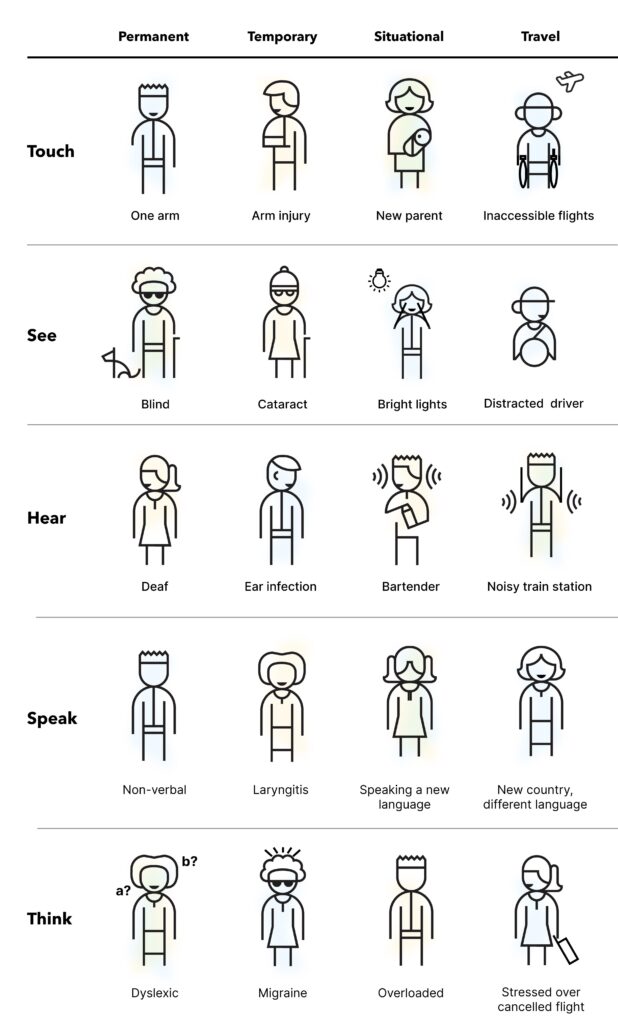How to build and run accessibility research, across various dimensions — from permanent and temporary to situational and travel, across touch, seeing, hearing, speaking and thinking.
How We’ve Built Accessibility Research at Booking.com” (https://lnkd.in/eq_3zSPJ), a fantastic case study on how to build accessibility practices and inclusive design into UX research from scratch. Kindly put together by Maya Alvarado.
🚫 Don’t rely on automated accessibility testing alone.
✅ Compliance means that a user can use your product.
✅ But it doesn’t mean that it’s a great user experience.
✅ Manual testing makes sure that users meet their goals.
✅ Start by gathering people interested in accessibility.
✅ Document what research was done, where the gaps are.
✅ Include 5–12 users with disabilities in accessibility testing.
✅ Recruit via testing platforms, non-profits, communities.
✅ Add extra $25–$50 depending on disability transportation.
✅ Run a small accessibility initiative around key flows first.
✅ Then tap into critical touch points and research them.
✅ Extend to components, patterns, flows, service design.
✅ Incorporate inclusive sampling into all research projects.
✅ At least 15% of usability testers should have a disability.
Companies often struggle recruiting testers with disabilities. One way to find participants is to reach out to local chapters, local training centers, non-profits and public communities of users with disabilities in your country. Ask admin’s permission to post your research announcement, and it won’t be rejected.
I absolutely love the idea of extending Microsoft’s Inclusive Design Toolkit (https://lnkd.in/eN5J7EkJ) to meet specific user needs of a product. It adds a different dimension to disability considerations which might be less abstract and much easier to relate for the entire organization.
As Maya noted, inclusive design is about building a door that can be opened by anyone and lets everyone in. Accessibility isn’t a checklist — it’s a practice that goes beyond compliance. A practice that involves actual people with actual disabilities throughout all UX research activities.
Useful resources:
A Comprehensive Guide to Accessible UX Research, by Brian Grellmann
https://lnkd.in/eAwDQPGr
Inclusive User Research: Recruiting Participants, by Ela Gorla
https://lnkd.in/ejXXzcwY
Testing With Blind Users: A Cheatsheet, by Slava Shestopalov
https://lnkd.in/exgtBPi2
Mobile Accessibility Research with Screen-Reader Users, by Tanner Kohler
https://lnkd.in/eb5Y36qZ
How To Conduct UX Research With Participants With Disabilities, by Peter McNally
https://lnkd.in/ezVmB_fu
How To Conduct Accessibility UX Research, by AnswerLab
https://lnkd.in/ec2q-fM8
#ux #accessibility
